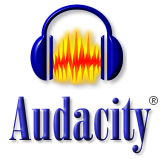
By the end of the tutorial, students will be able to record directly into Audacity or import audio files to create multi-layered tracks in Audacity (free, open-sourced software). Students will also know where to find copyright-free music resources.
Step 1:
Watch the CDEx’s 5-minute Audacity Tutorial.
Step 2:
Find either a (short) poem or song lyrics that you’d like to record in your own voice. Try the Poetry Foundation or SongLyrics. Copy and paste the poem or lyrics into a Word document or Notepad file and save it to your project folder on the desktop.
Step 3:
Find a site to download copyright-free/Creative Commons-licensed music based on our list here: http://cdex.tcu.edu/resources/tech/audio/resources/. Choose two songs (your first choice and a backup) that you think would sound good as background music with your chosen poem or song lyrics and save them in a project folder on your desktop.
Step 4:
Using the CDEx’s voice recorders or your cell phone, record yourself saying the poem or lyrics. Transfer the files from the equipment to your computer and save them in your project folder on the desktop. You can also record directly into Audacity if your computer has a microphone.
Step 5:
Import your voice recording and song(s) into Audacity. Start experimenting with splitting the audio tracks, adjusting the speed or volume of the tracks, etc.
Download Audacity from:
- GitHub: https://github.com/Audacity
- SourceForge: https://sourceforge.net/projects/audacity/
Step 6:
Save the version of your final product and export it to the desktop as a .WAV file (not an Audacity file – go back to the Audacity video tutorial if you forgot how to do this). Share with another member of the class and offer each other feedback.
Step 7:
Whole class discussion of the process: what lessons did you learn about file management? About locating appropriate sound files? About using Audacity?
Additional Audacity Tutorials from YouTube:
Andrew Mercer’s Audacity Tutorial Playlist
